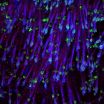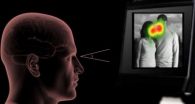(Press-News.org) In a recent study, a researcher at the University of Colorado Boulder found no evidence that a California ban on using hand-held cellphones while driving decreased the number of traffic accidents in the state in the first six months following the ban.
The findings, published in the journal Transportation Research Part A: Policy and Practice, are surprising given prior research that suggests driving while using a cellphone is risky. For example, past laboratory studies have shown that people who talk on a cellphone while using driving simulators are as impaired as people who are intoxicated.
"If it's really that dangerous, and if even just a fraction of people stop using their phones, we would expect to find some decrease in accidents," said Daniel Kaffine, an associate professor of economics at CU-Boulder and an author of the study. "But we didn't find any statistical evidence of a reduction."
California enacted its ban on hand-held cellphones on July 1, 2008. For the new study, Kaffine and his co-authors—Nicholas Burger of the RAND Corporation and Bob Yu of the Colorado School of Mines—looked at the number of daily accidents in the six months leading up to the law's enactment and compared that to the number of accidents in the six months following the ban.
They chose to look a relatively narrow window of time to reduce the number of other variables that might have an impact on accident rates, including the possible introduction of safer cars into the market, an economic recession that leads to a drop in overall driving, or other changes to state traffic laws.
The researchers also corrected their data to account for precipitation, which can cause more accidents; gas prices, which can affect how many vehicles are on the road; and other unobservable factors that may have influenced accidents.
The study was not designed to determine why accidents did not decrease, but there are several possible reasons, Kaffine said. One is that people switched from using hand-held devices to hands-free devices, such as ones with Bluetooth technology. Prior studies in the lab have suggested that both types of devices may be equally distracting.
It's also possible that people were not complying with the new law, though past studies suggest that cellphone use dropped in other states when bans were enacted.
The reason could also be that the type of people who would drive recklessly using a cellphone are generally prone to distracted driving and would potentially cause accidents by fiddling with things, such as CD players or GPS devices, if they weren't using their cellphones.
And finally, it's possible that past studies of the risk of using cellphones while driving overestimate the danger. Since many of these studies were done in the lab, it could be that people perform differently using a driving simulator than they do on a real road.
Determining which, if any, of these reasons may have led to the ineffectiveness of California's ban could lead to better cellphone policies in the future. For example, if the problem is just that compliance is low, then an increase in fines might be all that's necessary to decrease accidents.
"Disentangling these effects will be useful for policymakers in other states who are considering policies to address distracted driving," Kaffine said. "However, our results suggest that simply banning hand-held cellphone use may not produce the desired increase in traffic safety."
INFORMATION:
No evidence that California cellphone ban decreased accidents, says Colarado University Boulder researcher
2014-07-17
ELSE PRESS RELEASES FROM THIS DATE:
Peering into giant planets from in and out of this world
2014-07-17
Lawrence Livermore scientists for the first time have experimentally re-created the conditions that exist deep inside giant planets, such as Jupiter, Uranus and many of the planets recently discovered outside our solar system.
Researchers can now re-create and accurately measure material properties that control how these planets evolve over time, information essential for understanding how these massive objects form. This study focused on carbon, the fourth most abundant element in the cosmos (after hydrogen, helium and oxygen), which has an important role in many types ...
Help wanted: Principals who love change
2014-07-17
DALLAS (SMU) – Training principals for new roles is key to U.S. Department of Education school reforms, according to a new report by SMU researchers. But insufficient training and support for principals to meet the new expectations is leading to a leadership crisis. Twenty percent of newly minted principals leave the profession after two years and seasoned professionals are opting for early retirement.
Education researchers Lee Alvoid and Watt Lesley Black Jr. examine school districts at the forefront of supporting and training effective principals in their report "The ...
CNIO researchers discover a gene that links stem cells, aging and cancer
2014-07-17
An organism is healthy thanks to a good maintenance system: the normal functioning of organs and environmental exposure cause damage to tissues, which need to be continuously repaired. This process is not yet well understood, but it is known that stem cells in the organs play a key role, and that when repair fails, the organism ages more quickly. Researchers from the Spanish National Cancer Research Centre (CNIO) have "discovered one of the key genes that make up the maintenance mechanism for tissues" says Miguel Foronda, the first author of the manuscript.
The study ...
First ab initio method for characterizing hot carriers
2014-07-17
One of the major road blocks to the design and development of new, more efficient solar cells may have been cleared. Researchers with the Lawrence Berkeley National Laboratory (Berkeley Lab) have developed the first ab initio method – meaning a theoretical model free of adjustable or empirical parameters – for characterizing the properties of "hot carriers" in semiconductors. Hot carriers are electrical charge carriers - electrons and holes – with significantly higher energy than charge carriers at thermal equilibrium.
"Hot carrier thermalization is a major source of ...
Untangling spider's webs
2014-07-17
For decades, the story of spider evolution went like this: As insects became more and more diverse, with some species taking to the skies, spiders evolved new hunting strategies, including the ability to weave orb-shaped webs to trap their prey.
From that single origin, the story goes, orb-weaver spiders diverged along different evolutionary paths, leading to today, where several species weave similar – though not identical – webs.
It's a good story, but there's just one problem – Harvard scientists now know it's not true.
The largest-ever phylogenetic study of ...
Eye movements reveal difference between love and lust
2014-07-17
Soul singer Betty Everett once proclaimed, "If you want to know if he loves you so, it's in his kiss." But a new study by University of Chicago researchers suggests the difference between love and lust might be in the eyes after all.
Specifically, where your date looks at you could indicate whether love or lust is in the cards. The new study found that eye patterns concentrate on a stranger's face if the viewer sees that person as a potential partner in romantic love, but the viewer gazes more at the other person's body if he or she is feeling sexual desire. That automatic ...
Atlantic salmon also show capacity to adapt to warmer waters
2014-07-17
Populations of Atlantic salmon have a surprisingly good capacity to adjust to warmer temperatures that are being seen with climate change, a group of scientists at the University of Oslo and University of British Columbia have discovered. The finding about Atlantic species adds to recent UBC-supported research on heat tolerance of Pacific salmon.
The new study, a collaboration between Norwegian and Canadian researchers, was recently published in Nature Communications. Funded by the Norwegian Research Council, it addressed questions around how climate change might affect ...
Eating lean beef daily can help lower blood pressure
2014-07-17
Contrary to conventional wisdom, a growing body of evidence shows that eating lean beef can reduce risk factors for heart disease, according to recent research by nutritional scientists.
"This research adds to the significant evidence, including work previously done in our lab, that supports lean beef's role in a heart-healthy diet," said Penny M. Kris-Etherton, Distinguished Professor of Nutrition, Penn State. "This study shows that nutrient-rich lean beef can be included as part of a heart-healthy diet that reduces blood pressure, which can help lower the risk for cardiovascular ...
Gut microbes turn carbs into colorectal cancer
2014-07-17
Colorectal cancer has been linked to carbohydrate-rich western diets, but the underlying mechanisms have been unclear. A study published by Cell Press July 17th in the journal Cell shows that gut microbes metabolize carbohydrates in the diet, causing intestinal cells to proliferate and form tumors in mice that are genetically predisposed to colorectal cancer. Treatment with antibiotics or a low-carbohydrate diet significantly reduced tumors in these mice, suggesting that these easy interventions could prevent a common type of colorectal cancer in humans.
"Because hereditary ...
Brown fat found to be at the root of cancer-related wasting syndrome
2014-07-17
VIDEO:
Many patients with advanced stages of cancer, AIDS, tuberculosis, and other diseases die from a condition called cachexia, which is characterized as a "wasting " syndrome that causes extreme thinness with...
Click here for more information.
Many patients with advanced stages of cancer, AIDS, tuberculosis, and other diseases die from a condition called cachexia, which is characterized as a "wasting" syndrome that causes extreme thinness with muscle weakness. ...



